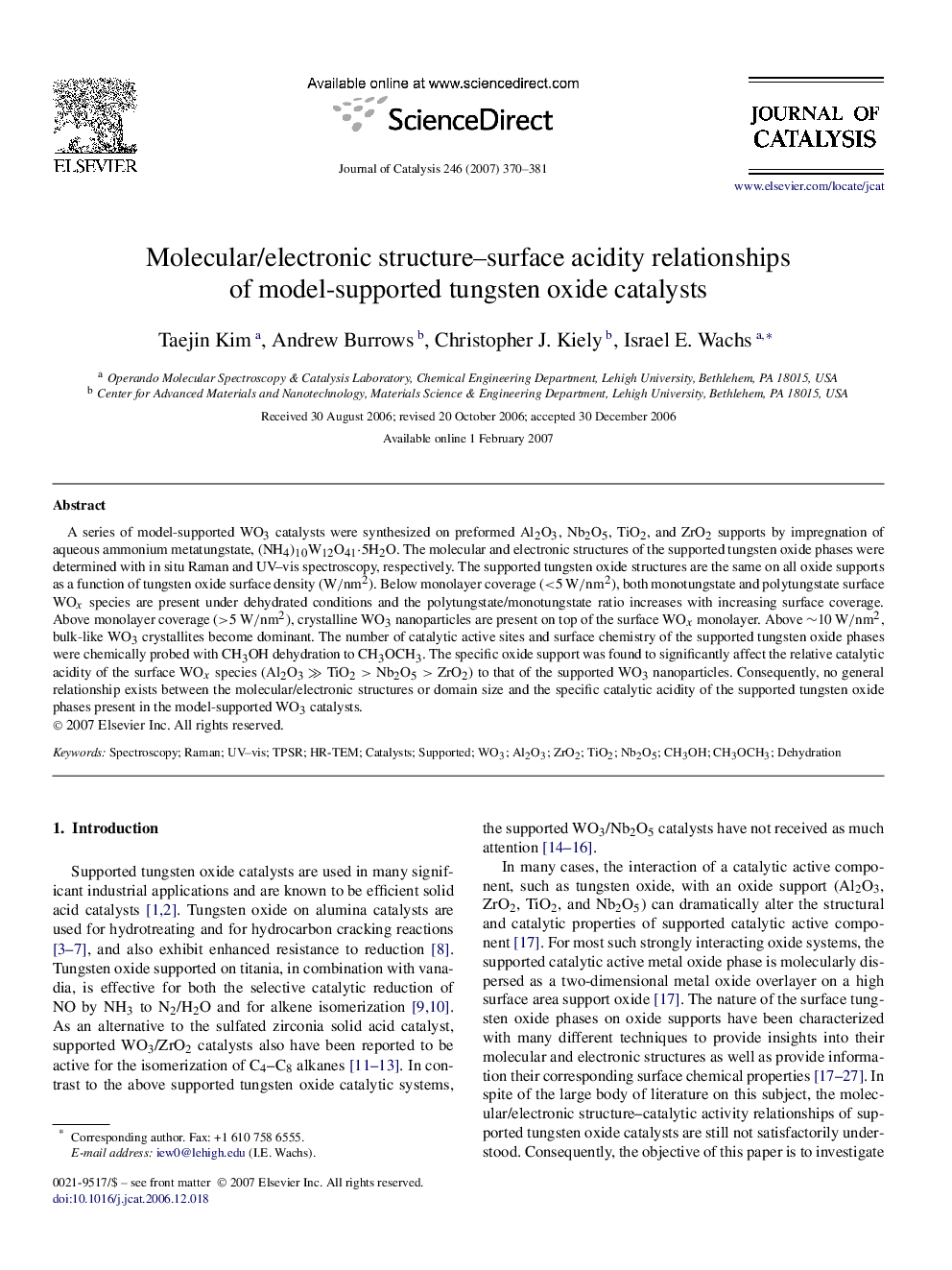| Article ID | Journal | Published Year | Pages | File Type |
|---|---|---|---|---|
| 63015 | Journal of Catalysis | 2007 | 12 Pages |
A series of model-supported WO3 catalysts were synthesized on preformed Al2O3, Nb2O5, TiO2, and ZrO2 supports by impregnation of aqueous ammonium metatungstate, (NH4)10W12O41⋅5H2O. The molecular and electronic structures of the supported tungsten oxide phases were determined with in situ Raman and UV–vis spectroscopy, respectively. The supported tungsten oxide structures are the same on all oxide supports as a function of tungsten oxide surface density (W/nm2). Below monolayer coverage (<5 W/nm2), both monotungstate and polytungstate surface WOx species are present under dehydrated conditions and the polytungstate/monotungstate ratio increases with increasing surface coverage. Above monolayer coverage (>5 W/nm2), crystalline WO3 nanoparticles are present on top of the surface WOx monolayer. Above ∼10 W/nm2, bulk-like WO3 crystallites become dominant. The number of catalytic active sites and surface chemistry of the supported tungsten oxide phases were chemically probed with CH3OH dehydration to CH3OCH3. The specific oxide support was found to significantly affect the relative catalytic acidity of the surface WOx species (Al2O3 ≫ TiO2 > Nb2O5 > ZrO2) to that of the supported WO3 nanoparticles. Consequently, no general relationship exists between the molecular/electronic structures or domain size and the specific catalytic acidity of the supported tungsten oxide phases present in the model-supported WO3 catalysts.
